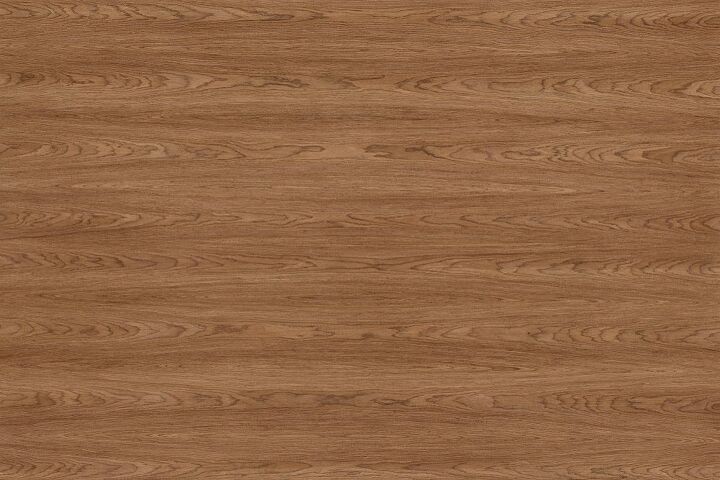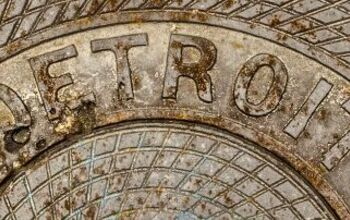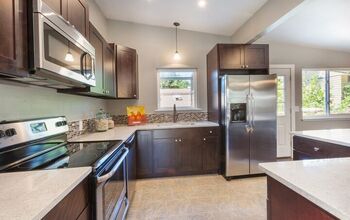What Are Pros And Cons Of Beechwood Cabinets?

The wood species that you select for your kitchen cabinets will make a major impact on the overall aesthetics of the space. Though, what your cabinets are made of not only determines how they will look, but also determine whether or not they will be able to stand up to daily use. To help strike the perfect balance between structural support and style, it’s important that you choose carefully.
Though less commonly seen used as a cabinet material, beechwood is one wood species that you may be considering. Despite being exceptionally heavy and expensive, beechwood is known for being very rigid, strong, and elegant. It is very easy to work with and accepts stain and polish well, which makes it a great choice for cabinets.
Let’s take a look at this wood species in further detail to understand what exactly beech wood is, what makes it a good choice for kitchen cabinets, and its pros and cons. We’ll also explore some additional options for cabinet wood types so you can make an informed decision about what is best for your kitchen environment.
Don't want to do it yourself?
Get free, zero-commitment quotes from pro contractors near you.

What is Beechwood?
Derived from beech trees usually found in most northern continents, beechwood is a pale, reddish-brown color that is ideal for staining. The wood is slightly coarse with tiny pores and visible rays. It cuts easily with both hand and power tools, without displaying damage from either. Beechwood can be used for many applications around the home, as it is easy to stain. It is often seen used in the construction of hardwood flooring, stools, and chairs.
Since it’s a durable wood species, beechwood is the ideal choice for furniture that has to withstand frequent use. The wood has a medium resistance to shock, which makes it suitable for high-traffic flooring or furniture that’s used on a daily basis. However, beechwood is susceptible to pests, so a protective treatment is required for best results.
Is Beechwood Good for Kitchen Cabinets?
Beech was valued among early furniture makers for being durable, easily available, and low in cost. Nowadays, it is still more often used for the construction of furniture than cabinets. However, that’s not to say that it doesn’t make a good choice for building kitchen cabinets. Its straight grain provides added strength whatever you choose to build with it – from tables and chairs to cabinets and hardwood floors.
The wood is revered for its compatibility with stains and rigidity. While beech wood is not without defects, it is graded more stringently than other wood species. This results in only the best lumber making it available on the market. The inferior-quality beech is usually reserved for use as a wood byproduct since it often has issues with warping and twisting. Even when kiln-dried, it is more likely to expand and contract because of moisture retention than alternatives.
While the chances of you getting inferior-grade beechwood are rare, it’s still important to check the wood for straightness and verify that it has had adequate time drying in a kiln. This will ensure that you have the best pieces of lumber for constructing your beechwood cabinets.
Advantages of Beechwood Cabinets
Now that you have a greater understanding of what beech wood is and its uses, let’s explore some of the advantages you’ll enjoy from choosing this wood species for your kitchen cabinets:
- Strength: Beechwood is known for being very strong and rigid when compared to other wood species. As such, it makes a great choice for any piece of furniture that sees frequent use – like cabinets.
- Shock Resistance: Beechwood is shock absorbent, which is why it is frequently used for hardwood flooring or other high-traffic applications. It also has excellent bending characteristics.
- Accepts Stain Well: The wood is very easy to stain and polish, which makes it effortless to achieve a smooth, flawless finish that is customized to your liking.
- Easy to Work With: This wood species is easy to cut and work with, making it the ideal choice for cabinetmaking.
Disadvantages of Beechwood Cabinets
Like anything, beechwood also comes with its own unique set of disadvantages when you choose to use it for constructing cabinets. These include:
- Moisture Absorbent: Beechwood is known for absorbing a large amount of water, which makes it not recommended for use outdoors. Since it tends to absorb moisture, beechwood also has a strong tendency to warp, split, and crack on the surface. It is also subject to a large amount of shrinking and should be dried appropriately.
- Heavy: Since beech wood is so dense in nature, beechwood cabinets are typically very heavy. This can make the wood challenging to work with for non-professionals.
- Expensive: Beechwood is typically a much more expensive material when compared to other wood species.
- Susceptible to Pests: This wood species is susceptible to infestation by the longhorn beetle and common furniture beetle. To prevent an attack, the wood must be treated on a regular basis.
Other Cabinet Wood Options
Choosing a quality wood species for your cabinets can improve the overall longevity of your kitchen, while also providing personality with its distinct characteristics and markings. With that said, here are some other wood species that you may consider for your cabinet project:
1. Cherry Wood Cabinets
For traditionalists, cherry wood is often the go-to choice. While it’s not technically a hardwood, cherry wood is long-wearing and durable. Cherry cabinets are notorious for their beautiful rich and elegant color – which can vary from a deep yellow to a pale red hue. Like beech wood, cherry wood absorbs stain well. Though, walnut and deep mahogany shades tend to be the best pairings.
These types of cabinets are generally more expensive, but you’ll enjoy the benefit of exceptional durability that seldom dents or chips. As cherry wood cabinets age, they will naturally darken.
2. Oak Wood Cabinets
Both durable and cost-effective, oak wood is often a popular choice for cabinetry. Its porous surface accepts stain well and the grain features flame-like patterns that are very recognizable. Oak wood is also easy to clean, lightweight, and strong enough for everyday use. To amplify the grain, consider treating the oak wood with a darker stain. Or, opt for a lighter honey stain for a more contemporary look.
3. Maple Wood Cabinets
Maple wood cabinets are known for their smooth, uniform grain, fine texture, and strength. The wood comes naturally pale to a creamy white hue, typically featuring reddish streaks that become more prominent with staining. Oftentimes, you’ll find mineral streaking, bird’s eye dots, and curling grain on various maple wood cabinets which adds to the individuality of each piece.
The durability of maple is ideal for modern kitchens that see frequent use. Maple also accepts stain well and comes in a wide array of colors to enhance the appearance of the wood underneath.
4. Bamboo Wood Cabinets
For an eco-friendly option, consider bamboo wood cabinets. While traditional wooden cabinets are constructed out of planks that come from large trees, bamboo boards are created from stalks that are cut into strips and then laminated together. The orientation of the strips is what creates the characteristic vertical or horizontal graining of bamboo cabinets.
Bamboo cabinets are exceptionally sturdy and the laminated surface is highly resistant to dents, dings, and chips. Often available in light colors, these cabinets add a light, airy, and modern look to kitchens. Unlike real wood, bamboo cabinets will not expand or contract and are resistant to climate changes.
5. Birch Wood Cabinets
When compared to other popular hardwoods, birch wood is typically less expensive. These cabinets largely uniform appearance and don’t have distinctive graining for easily receptive staining. The surface of birch wood is non-porous and closed, and can be painted or paired easily with various decorative treatments.
One popular type, yellow birch, is especially durable and holds nails well which makes it ideal for cabinetmaking. Birch can also be finished in a way that mimics more expensive wood species such as maple, walnut, or mahogany.
Don't want to do it yourself?
Get free, zero-commitment quotes from pro contractors near you.

Wood Cabinet Features to Consider
When it comes to choosing the ideal cabinet material, you should keep the following factors in mind:
- Color: It’s important to note that you don’t have to be married to the natural color of the wood that you choose. For example, by using stain you can mimic the color of maple wood on a beech base. Painting your wood cabinets is also another option. So, don’t get too hung up on the color of the natural wood and focus more on whether or not the species can handle staining or painting.
- Grain: Grain matching can be challenging and veneered cabinets are usually going to provide better grain-matching than solid wood – unless you choose wood on the very high end.
- Assembly: There are a number of different ways to construct wood cabinet drawers – whether it’s with dowels, rabbets, or dovetails. Although drawers that are made with dovetails tend to last longer, they use more wood to produce. As such, they are more expensive.
Related Articles

Jessica considers herself a home improvement and design enthusiast. She grew up surrounded by constant home improvement projects and owes most of what she knows to helping her dad renovate her childhood home. Being a Los Angeles resident, Jessica spends a lot of her time looking for her next DIY project and sharing her love for home design.
More by Jessica Stone
































